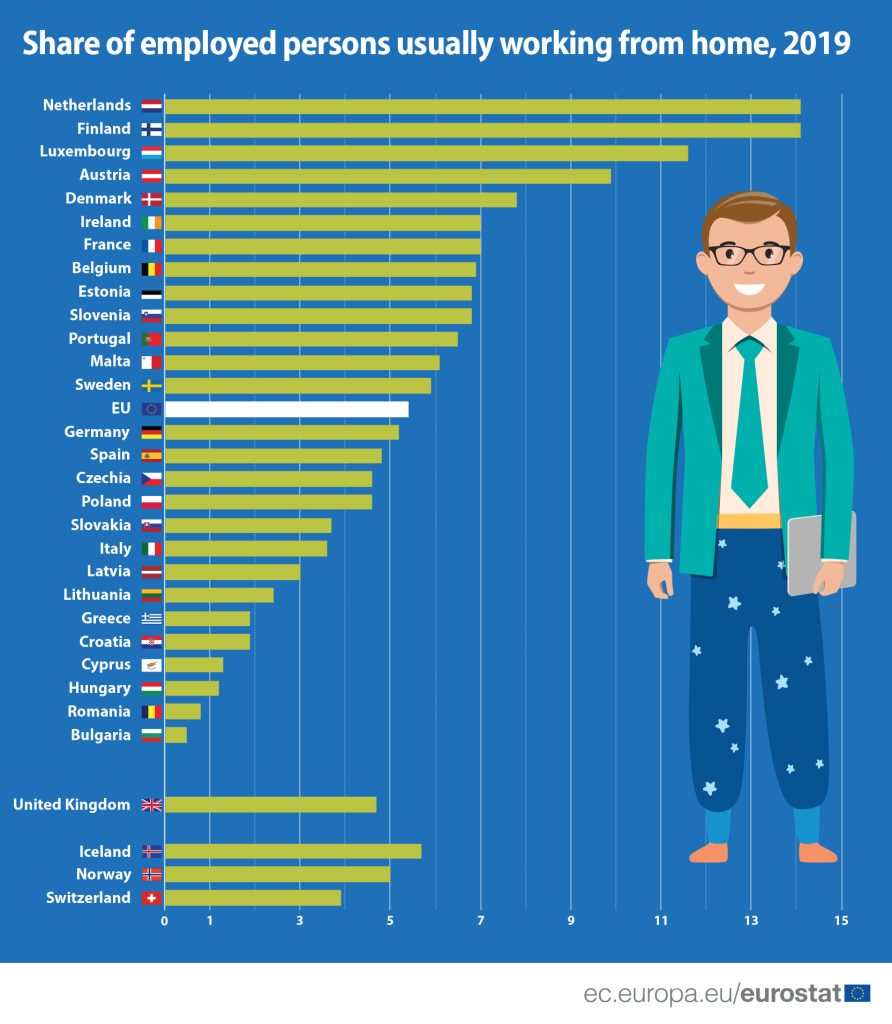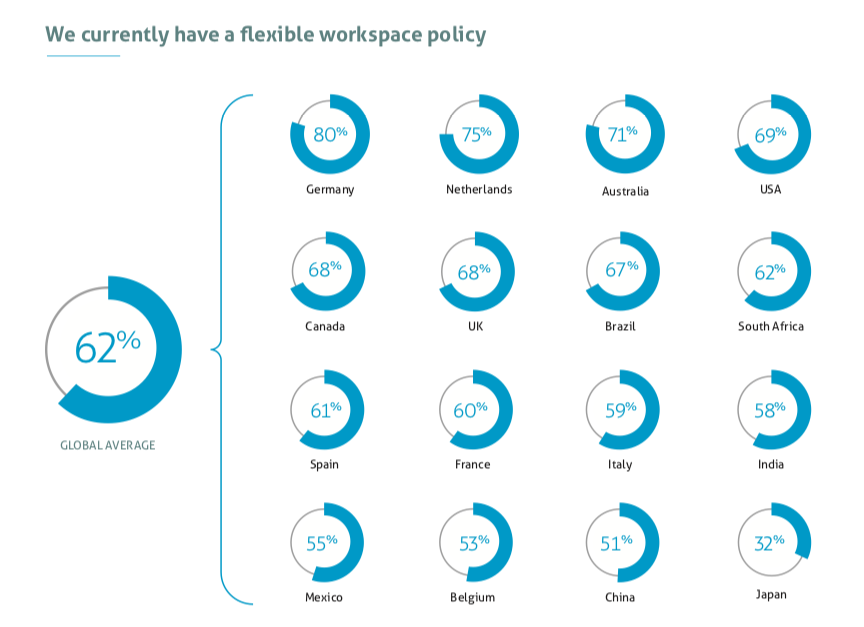This period is described as the biggest remote working experiment in history. Many companies were quickly forced to switch to the working-from-home structure and to a remarkable extent, many have continued to carry out much of their business operations. Being connected from anywhere, having remote access to data, tools, and collaboration platforms quickly showed us that our work could continue, and to the surprise of most of us, fairly easily.
Is remote working here to stay even after Covid-19? How common was working from home before the lockdown hit the world? Are people likely to move to suburban and rural areas instead of staying in central locations since they don't need to commute to work anymore? Here is what we found:
Remote work statistics before Covid-19
Since 2005, working from home and remote locations across the globe has grown 159%, more than 11 times faster than the rest of the workforce. A survey from 2019 found that already 62% of global companies have already introduced some sort of remote working policy.
The graph below represents the European workforce ¨usually working from home¨ in 2019.

In 2019, 5.4% of employed persons in the EU who were aged 15-64 usually worked from home. This share has remained constant at around 5% throughout the last decade. However, over the same period, the share of those who sometimes worked from home has been rising: from 6.0% in 2009 to 9.0% in 2019.
Below is a list of countries that have flexible workspace policies in place.

Advantages of remote work
The topic of remote work is producing a lot of attention, but we wanted to know if there's any real evidence that shows remote work can be beneficial to both companies and their employees.
The world’s top researchers like Harvard University or Global Workplace say yes, that workplace flexibility can boost the bottom line in these five categories:
Productivity - remotely working people are on average 35-40% more productive than their office counterparts
Performance - with stronger autonomy via location independence, workers produce results with 40% fewer quality defects.
Engagement - combined higher productivity and performance create stronger engagement (41% higher), or in other words, 41% lower absenteeism.
Retention í¢€â€ 54% of employees said they would change jobs for one that would offer more flexibility. As a result, this leads to an average of 12% turnover reduction after a remote work agreement is offered.
Profitability í¢€â€ Organisations are estimated to have a 21% higher profitability.
How about the employees? Are they gaining more, too?
A survey conducted in 2017 reviewed the opinions of 25,234 people across 12 countries including the US, Canada, Brazil, Japan, Germany, UK, India, Singapore, Russia, France, Australia and China. 55% of them were managers or above.
They divided the respondees into 4 age groups: 16-29, 30-44, 45-59 and 60+ and asked what the biggest advantage of flexible working was.
The answers below are in order of what was the most advantageous:
- taking control of work-life balance
- ability to work anywhere and be more productive
- avoiding the stress of commuting into the office
- having more time to exercise/enjoy hobbies
- Saving money on travel
The flipside to remote work
While clearly there're many advantages of working from home, it's not all roses - there are some difficulties that come with remote working. Face-to-face meetings, building relationships, socialising, touring clients for their chosen properties - all of these are missed and can’t be easily replaced. And as much as technology offers great solutions, remote work requires a lot of self-discipline, watching our schedules and deadlines.
Separating private life from work can be more difficult for some people too, mainly if the home becomes a workplace. We need to adjust our office space or divide attention between work and children. Real estates and developers in Spain start offering virtual touring and video calling to show their properties, but to what extent people will want to be buying homes digitally? We are yet to see.
Influence of remote working on the environment
Moving away from the city
Since the coronavirus outbreak surged in March, there has been a 25% increase in inquiries by people looking for lifestyle changes due to a health emergency. Crowds, mass transport, huge cultural venues are what people are afraid of these days. Those who can are escaping to their country estates and more people will be looking for properties further away from cities.

If you're dreaming of wide-open space and slowing down a notch, we've highlighted the main advantages of living in small towns like Benahavís.
It certainly looks like remote working is here to stay and will more than ever become an integral part of the way we work. So what better place to choose for your home office if not here - with less noise and more quiet open space and nature.
You can trade off a concrete jungle for miles of trees, mountains and open sky that will add another aspect to your life - peacefulness and spaciousness that will make your life even more serene.

Could this lifestyle be for you?

